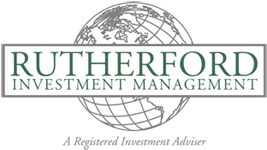Originally posted in the Daily Journal of Commerce, Portland OR
Published April 8, 2013

Meanwhile, 30-year Treasury bonds declined 3.1 percent for the first quarter, with the broader bond market declining 0.3 percent. In March, bonds declined 0.1 percent versus a return on equities of 3.75 percent. This is consistent with my previous admonition regarding bonds and the pressure they will be under as interest rates rise.
Previously I remarked that a movement from bonds to equities is expected as the Fed policies continue to favor equities. Investors have been forced to take more and more risk to find yield, and this will not end well. Bond exchange-traded funds are taking more risk; money market funds, normally thought to be a safe haven, are forced to take more risk.
The averages reached these new records in spite of year-end wrangling over the budget in Washington. First, the so-called “fiscal cliff” fixated the markets, but then came and went. Then sequestration loomed, and that was thought to mean the end of the rally. But the market just shrugged. Another crisis out of Europe was also dismissed.
About the only thing that seemed to give the market pause was our old friend Alan Greenspan. After 10 straight days of market increases, Greenspan took to the airwaves, and announced on March 15 on CNBC that the markets were undervalued; that was enough to halt this steaming locomotive in its tracks. The market dropped, breaking the 10 consecutive days of rally.
The contrast between the last market highs in 2007 and the present are large. There is actually less market strength today to back up the new highs than there was in 2007. At that time, unemployment was below 5 percent, the housing markets were strong but peaking, investor sentiment was positive, and the global economies were growing. Today, the market highs seem more to be the result of the Federal Reserve inducing global monetary easing. But compared to 2007, companies today have half the debt, pay bigger dividend yields and have 13 percent greater profits.
Many people have waited to “buy on the dip,” but that has only added strength to the market. In an average year, the market posts five corrections of 5 percent or more, so it would not be surprising to see a mild correction; however, with the amount of money on the sidelines, it should be shallow and short.
Perhaps these conflicting signals are the reason why contrasts can be observed. A senior analyst at a well-known securities firm forecasts that the S&P 500 will drop to 1,390 by the end of the year – an 11 percent drop from the close of the first quarter. But the chief equity strategist at the same firm sees the S&P at 1,525 to 1,575 by the end of the year, with a continuation of the current uptrend. He cites, for instance, the strength in the conference board leading indicators. If the same company cannot agree with in its own investment strategists, it is not surprising that investors are confused.
While I believe that most of the gains for the year are already on the books, there is still room for some growth between now and the end of the year. I expect some dips, but overall the trend should be up.
Extraneous events such as additional European crises and continued weakness in the European economy can cause uncertainty and upset. Our own government adds a high degree of uncertainty; the market abhors uncertainty. So overall, I see the market continuing to climb its “wall of worry” with occasional setbacks. Remain invested and diversified
